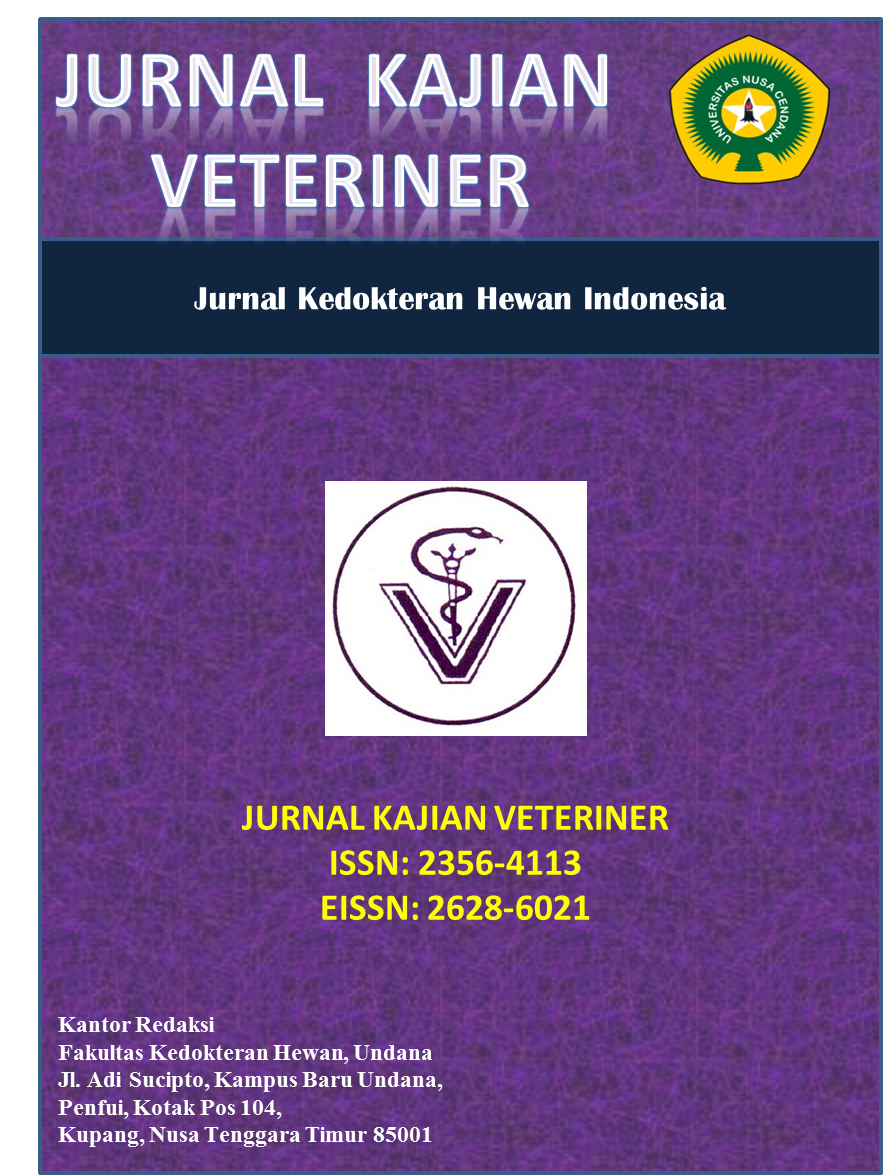Garlic As Antibacterial in Lactose Fermenter Enterobacteriaceae
Abstract
This study attempts to investigate the antibacterial effectiveness of three varieties of garlic (single garlic, kating garlic, and black garlic) on the growth of Enterobacteriaceae bacteria (Escherichia coli, Enterobacter sp, Klebsiella sp. from chicken meat samples. Treatment Kating garlic, single garlic, and black garlic at concentrations of 20%, 40%, 60%, 80%, 90%, 100%. This study observed the inhibition zone on Muller Hinton Agar (MHA) media that had been planted with bacterial isolates. The inhibition test uses the disk diffusion method. The findings revealed that kating garlic and single garlic showed inhibition zones against Escherichia coli, Enterobacter sp., and Klebsiella sp. bacteria. Meanwhile, black garlic did not show an inhibition zone against E. coli bacteria, but showed an inhibition zone against Klebsiella sp., Enterobacter sp., and Kating garlic had the largest bacterial inhibition zone against E. coli, Klebsiella sp., Enterobacter sp., followed by single garlic.
Downloads
References
Bar, M., Binduga, U. E., and Szychowski, K. A. 2022. Methods of Isolation of Active Substances from Garlic (Allium sativum L.) and Its Impact on the Composition and Biological Properties of Garlic Extracts. Antioxidants. 11(7). 071345
Belluco, S., Barco, L., Roccato, A., & Ricci, A. (2016). Escherichia coli and Enterobacteriaceae counts on poultry carcasses along the slaughterline: A systematic review and meta-analysis. Food Control. 60: 269–280.
Che Mohd Ramli, N. K., Ujang, S., & Ramli, N. 2020. Awareness of black garlic benefits to health: A preliminary study. Gading Journal of Science and Technology. 3(2): 148–155.
Choi, I. S., Cha, H. S., and Lee, Y. S.2014. Physicochemical and antioxidant properties of black garlic. Molecules. 19(10): 16811–16823.
Magryś, A., Olender, A., and Tchórzewska, D.2021. Antibacterial properties of Allium sativum L. against the most emerging multidrug-resistant bacteria and its synergy with antibiotics. Archives of Microbiology. 203(5): 2257–2268.
Mahros, M., Eltanahy, A., Abd-Elghany, S., and Sallam, K. 2021. The antimicrobial effect of fresh garlic and garlic oil supplemented with ground beef. Mansoura Veterinary Medical Journal. 22(2): 48–51.
Mohammed Abidullah, P. J., and , S. Sri Sujan2 , Ayyapa Gandhi Shrimanikandan3 , Chukka Rakesh Reddy4, R. K. W. 2021. Potential Antibacterial Efficacy of Garlic Extract on Staphylococcus aureus, Escherichia coli, and Klebsiella pneumoniae: An In vitro Study. Journal of Pharmacy and Bioallied Sciences. 14(1): S590–S594.
Muhammad Alief Harun1, Sultan Buraena2, Eny Arlini Wello3, Hasta Handayani Idrus4, A. S. F. A. 2021. Antibacterial Potency of Black Garlic Extract from Allium sativum on Escherichia coli. Green Medical Journal Vol.3 Issue: 3, 3(3): 124–131.
Muhammad, G., Muammad, I., Sobia, K., Dawood, A., Muhammad, J. A., Kashis, S. A., Muhammad, I., and Sajid, M.2014. A comparative study of antimicrobial and antioxidant activities of garlic (Allium sativum L.) extracts in various localities of Pakistan. African Journal of Plant Science. 8(6): 298–306.
Projahn, M., Pacholewicz, E., Becker, E., Correia-Carreira, G., Bandick, N., and Kaesbohrer, A. 2018. Reviewing Interventions against Enterobacteriaceae in Broiler Processing: Using Old Techniques for Meeting the New Challenges of ESBL E. coli. BioMed Research International, 2018.
Sorbara, M. T., Dubin, K., Littmann, E. R., Moody, T. U., Fontana, E., Seok, R., Leiner, I. M., Taur, Y., Peled, J. U., Van Den Brink, M. R. M., Litvak, Y., Bäumler, A. J., Chaubard, J. L., Pickard, A. J., Cross, J. R., and Pamer, E. G. 2019. Inhibiting antibiotic-resistant Enterobacteriaceae by microbiota-mediatedintracellular acidification. Journal of Experimental Medicine. 216(1): 84–98.
Strika, I., Bašić, A., and Halilović, N. (2017). Antimicrobial effects of garlic (Allium sativum L). Bulletin of the Chemists and Technologists of Bosnia and Herzegovina. 47: 17–20.
Tijjani, A., Aliyu, Y., and Musa, D. D. 2017. Antibacterial Activity of Garlic ( Allium sativum ) on Staphylococcus aureus and Escherihia coli. International Journal of Current Science and Studies. 1(1): 47–49.
Tilahun, M., Kassa, Y., Gedefie, A., & Ashagire, M. 2021. Emerging carbapenem-resistant enterobacteriaceae infection, its epidemiology and novel treatment options: A review. Infection and Drug Resistance, 14: 4363–4374.
Yetgin, A., Canli, K., and Altuner, E. M. 2018. Comparison of Antimicrobial Activity of Allium sativum Cloves from China and Taşköprü, Turkey. Advances in Pharmacological Sciences, 2018.
Copyright (c) 2023 JURNAL KAJIAN VETERINER

This work is licensed under a Creative Commons Attribution-NonCommercial-NoDerivatives 4.0 International License.

 Reina Puspita Rahmaniar(1*)
Reina Puspita Rahmaniar(1*)








.png)


